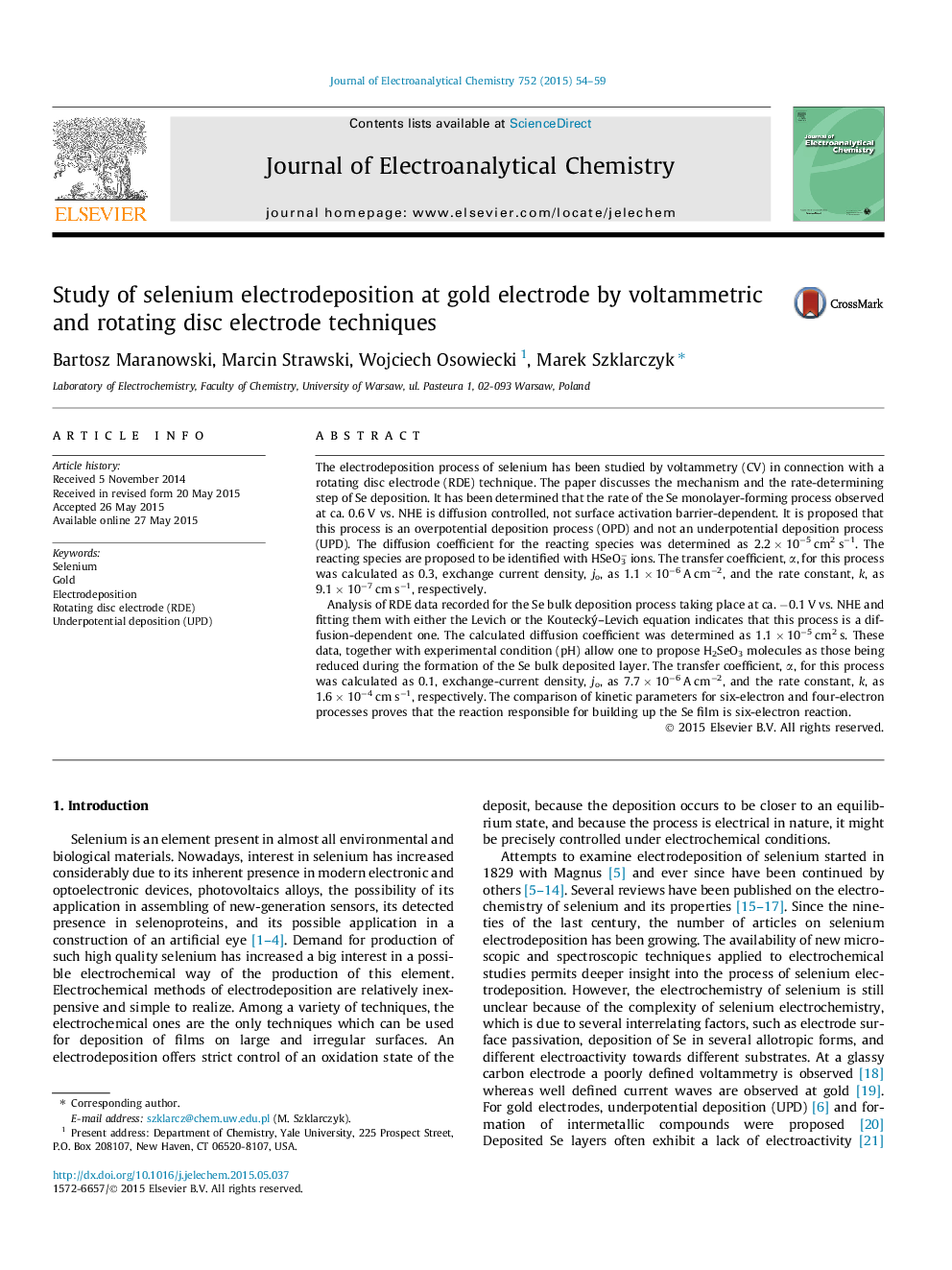| کد مقاله | کد نشریه | سال انتشار | مقاله انگلیسی | نسخه تمام متن |
|---|---|---|---|---|
| 218143 | 463185 | 2015 | 6 صفحه PDF | دانلود رایگان |
• Determination of kinetic parameters for selenium deposition processes.
• Transport process as the rate determining step of formation of Se monolayer on Au.
• H2SeO3 molecules are the precursor in electrochemical deposition of selenium films.
• Six-electron pathway of selenium electrodeposition dominates over four electron one.
The electrodeposition process of selenium has been studied by voltammetry (CV) in connection with a rotating disc electrode (RDE) technique. The paper discusses the mechanism and the rate-determining step of Se deposition. It has been determined that the rate of the Se monolayer-forming process observed at ca. 0.6 V vs. NHE is diffusion controlled, not surface activation barrier-dependent. It is proposed that this process is an overpotential deposition process (OPD) and not an underpotential deposition process (UPD). The diffusion coefficient for the reacting species was determined as 2.2 × 10−5 cm2 s−1. The reacting species are proposed to be identified with HSeO3− ions. The transfer coefficient, α, for this process was calculated as 0.3, exchange current density, jo, as 1.1 × 10−6 A cm−2, and the rate constant, k, as 9.1 × 10−7 cm s−1, respectively.Analysis of RDE data recorded for the Se bulk deposition process taking place at ca. −0.1 V vs. NHE and fitting them with either the Levich or the Koutecký–Levich equation indicates that this process is a diffusion-dependent one. The calculated diffusion coefficient was determined as 1.1 × 10−5 cm2 s. These data, together with experimental condition (pH) allow one to propose H2SeO3 molecules as those being reduced during the formation of the Se bulk deposited layer. The transfer coefficient, α, for this process was calculated as 0.1, exchange-current density, jo, as 7.7 × 10−6 A cm−2, and the rate constant, k, as 1.6 × 10−4 cm s−1, respectively. The comparison of kinetic parameters for six-electron and four-electron processes proves that the reaction responsible for building up the Se film is six-electron reaction.
Figure optionsDownload as PowerPoint slide
Journal: Journal of Electroanalytical Chemistry - Volume 752, 1 September 2015, Pages 54–59
